San Antonio Mural and Historical Marker
Introduction
Text-to-speech Audio
Designed by Thomas M. Stell, Jr., the San Antonio Mural was completed by Charles Francis Winans in 1981 as part of the City's River Walk Extension project. Both artists had strong ties to the city and to Texas, with Winans operating a gallery in San Antonio, and Stell completing several corporate commissions within the state. The mural is located in a short, well-lit tunnel that runs from the Hyatt Regency Hotel to the outdoor River Walk. Within the passageway, the mural appears on the left side when approaching from the hotel. A narrow channel of water runs along the right side of the tunnel, which is edged with tiered rows of native plants. A historical marker placed on the wall in 1981 states that the mural was dedicated to the people of San Antonio by Robert V. West of the Tesoro Corporation. In January 2021, the City added an interpretive sign below the mural, acknowledging the "rich, but complex" history of San Antonio, and in particular, the secession of Texas from the United States in March 1861, which lasted until the end of the Civil War in 1865.
Images
The San Antonio Mural, designed by Thomas M. Stell and completed by Charles Francis Winans in 1981.
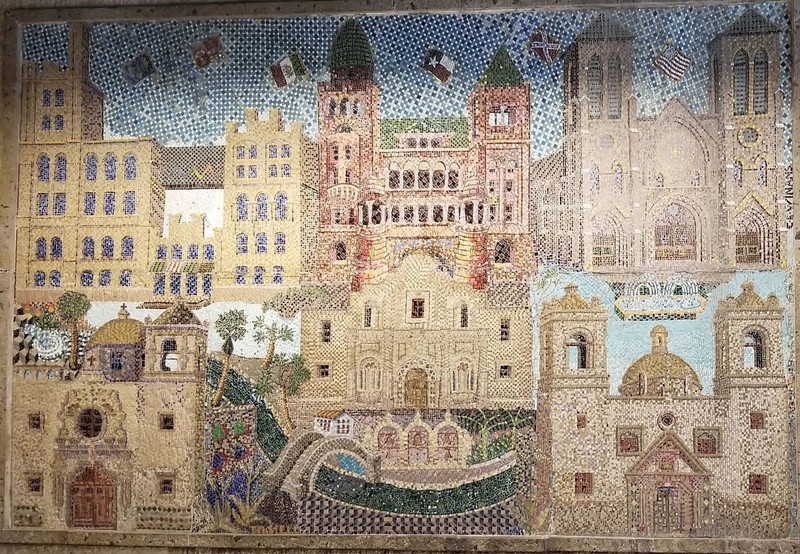
The San Antonio River Walk extension project was completed in 1981.
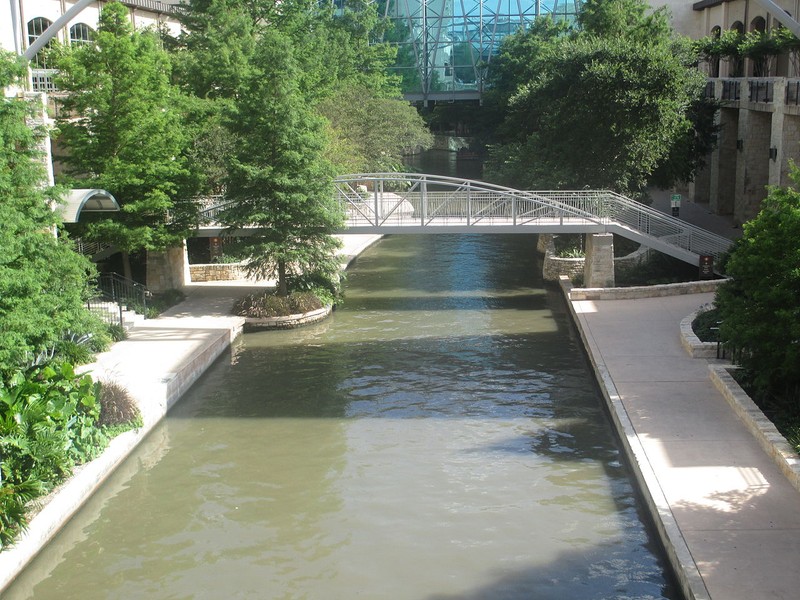
A historical marker was placed next to the mural in 1981, dedicating the artwork to the people of San Antonio.

The historical marker placed in 1981 states that the mural was given to the people of San Antonio: a community with a common goal, the economic and social improvement of the city
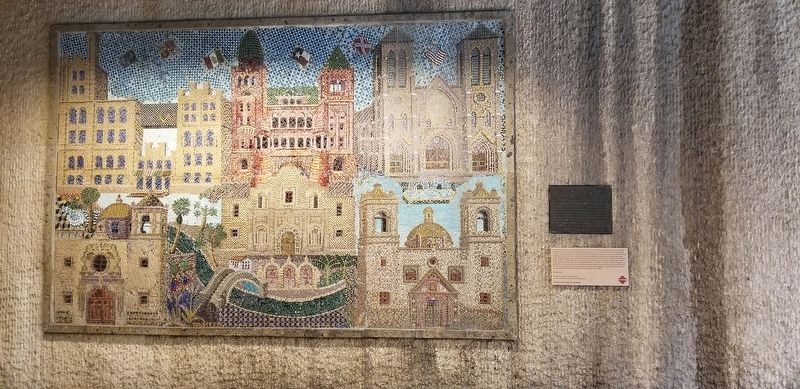
An interpretive sign was added next to the San Antonio Mural in January 2021, acknowledging the city's "rich, complex history"
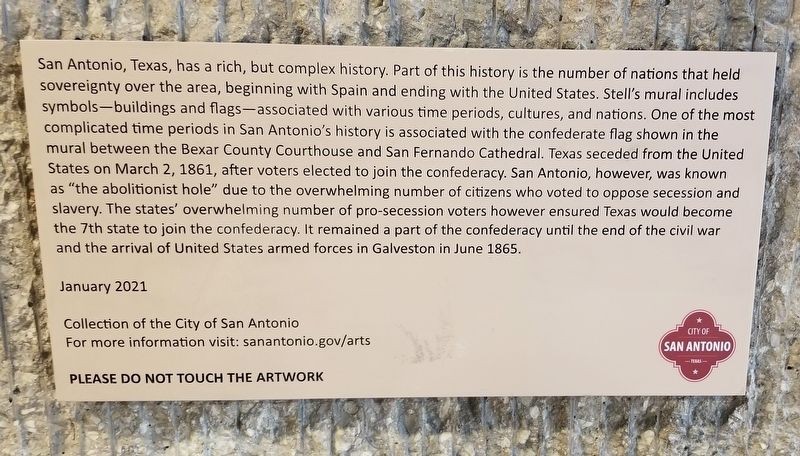
The mural is located in a short tunnel that runs from the Hyatt Regency Hotel to the outdoor River Walk.
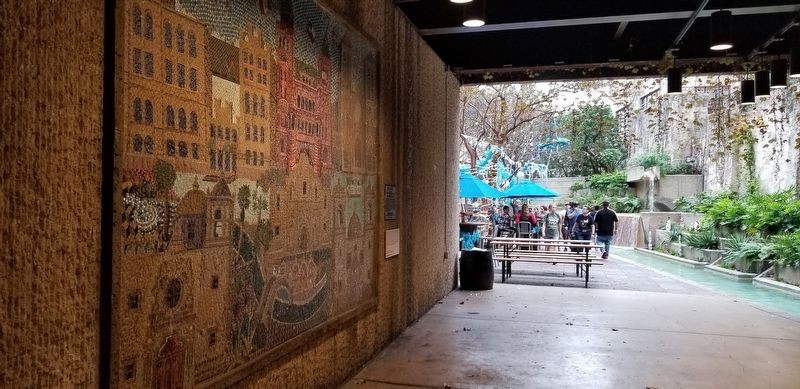
A quiet section of the River Walk near the Omni La Mansion Hotel
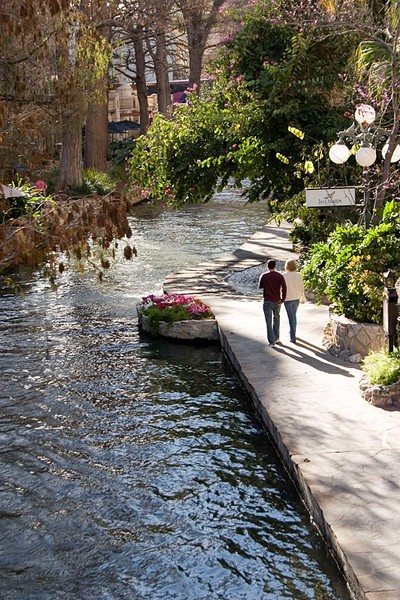
The King Williams extension of the River Walk looks north towards the Civic Center District.
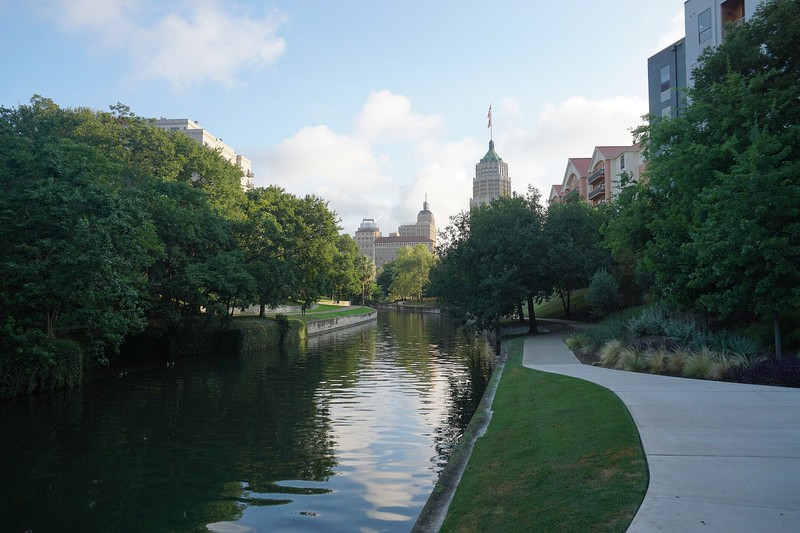
The San Antonio River is fed by the San Antonio Springs and the San Pedro Springs
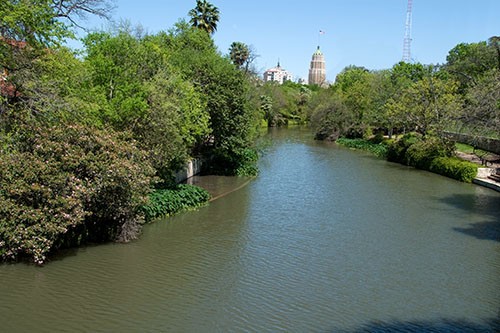
The San Antonio Mural depicts historic buildings within city

Backstory and Context
Text-to-speech Audio
As part of the 1981 River Walk Extension project, historical marker erected at this site notes that the San Antonio Mural was donated by Robert V. West, Jr., of the Tesoro Corporation. The mural was given “in recognition that we all are members of one community, and that we all have a common goal ... The goal of improving the economic and social conditions of our city and of making it a more desirable place in which to live.” In January 2021, the City of San Antonio also added an interpretive sign next to the mural, perhaps in response to the insurrection at the U.S. Capitol in Washington D.C. on January 6, 2021. The sign acknowledges the "rich, but complex history" of San Antonio since the time of its establishment, including competing claims of sovereignty from different nations, from Spain to the U.S. This history entailed "symbols, buildings, and flags associated with various time periods, cultures, and nations," including "one of the most complicated time periods in the San Antonio's history...associated with the confederate flag," which is depicted on the mural along with other flags. As noted on the interpretive sign, Texas seceded from the U.S. on March 2, 1861, following the decision of a majority of voters to join the confederacy. Despite this, San Antonio remained a stronghold for abolitionism, with "an overwhelming number of citizens who voted to oppose secession and slavery."
The San Antonio Mural was designed by Thomas M. Stell, Jr. (1898 - 1981), a draughtsman, portraitist, and mosaic artist who was part of a regional group known as the "Dallas Nine." Stell's lengthy career took him to Hollywood, Dallas, Chicago, Nebraska, and New York, where he initially studied art at Columbia University. He exhibited his work at the 1933 Texas State Fair and the 1939 Golden Gate Exposition in San Francisco, and he taught at the Dallas Art Institute before being appointed as the Texas Director for the American Index of Design, a federal Works Progress Administration (WPA) program. In the early 1940s, Stell became an instructor at San Antonio's Trinity University, and in 1945 he took a position in the art department of the University of Texas at Austin. After attending the same university as a graduate student, Stell began to travel and to experiment with creating murals using ceramics and glass. By 1966, he settled permanently in San Antonio, where he completed a series of glass mosaics depicting the indigenous peoples of North and South America for the City's Tower of the Americas in 1968. His corporate commissions also included a series of fourteen abstract mosaics depicting detailed machinery for the Dallas headquarters of Texas Instruments. His work appears in several private collections and in the art galleries at Southern Methodist University.
Shortly before his death in 1981, Stell was in the midst of a commission on behalf of the Tesoro Corporation, for which he designed a sixteen-by-nine-foot mural that would become part of the San Antonio River Walk Extension project. His design reflected his strong interest in Italian Renaissance art, as he admired the early Flemish artists for their attention to detail and use of "solid surfaces such as masonite or wood." As evidenced by the San Antonio Mural, Stell translated the artistic techniques that he studied early in his career into his later explorations of glass and ceramic mosaic art. Although he was unable to complete the commission prior to his death, Charles Francis Winans (1939 - 2007) was hired to finish the mural. Winans was raised in the Texas oil fields before working in cryptography and signal communication in the U.S. Air Force. In 1967, he settled in San Antonio, where he opened Grandma's Tea Shop and Jomo Gallery. His work was considered avant-garde, especially for south Texas in the 1960s, so he moved with his family to California, where he became part of the Beat Movement. Eventually, Winans returned to San Antonio and in 1981, he completed the mural designed by Thomas Stell for the City's River Walk Extension project.
Sources
"Charles Winans Obituary", Legacy. March 15th, 2007. Accessed March 14th, 2023. https://www.legacy.com/us/obituaries/sanantonio/name/charles-winans-obituary?pid=92236674.
Curlee, Kendall. "Stell, Thomas Matthew, Jr. (1898–1981)", TSHA. April 6th, 2019. Accessed March 14th, 2023. https://www.tshaonline.org/handbook/entries/stell-thomas-matthew-jr.
Fisher, Lewis F. "San Antonio River Walk [Paseo del Rio]", Texas State Historical Association. May 18th, 2018. Accessed March 14th, 2023. https://www.tshaonline.org/handbook/entries/san-antonio-river-walk-paseo-del-rio.
Hulse, James. "San Antonio", HMDB. December 21st, 2021. Accessed March 14th, 2023. https://www.hmdb.org/m.asp?m=188657.
James Hulse / HMDB
Photography by Billy Hathorn, WikiCommons
James Hulse / HMDB
James Hulse / HMDB
James Hulse / HMDB
James Hulse / HMDB
Photograph by Kkmd, WikiCommons
Photograph by Michael Barera, WikiCommons
The Edwards Aquifer Website
Trip Advisor
